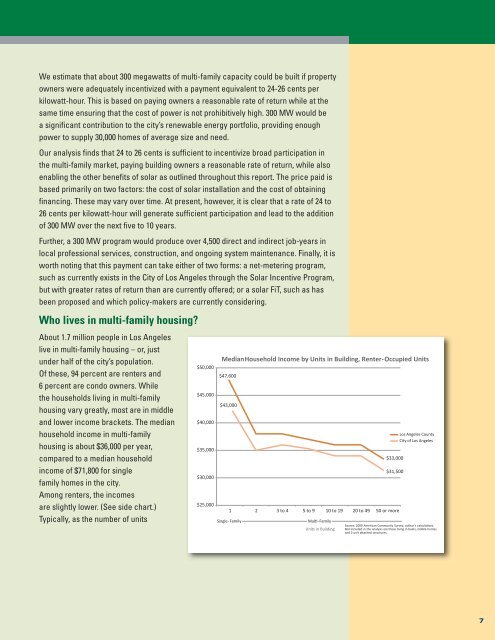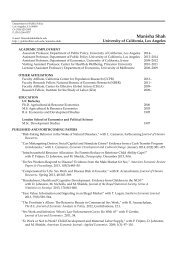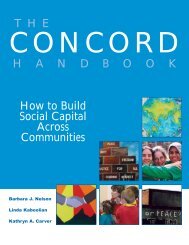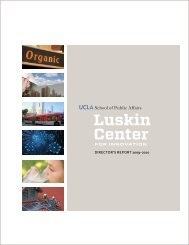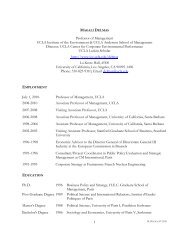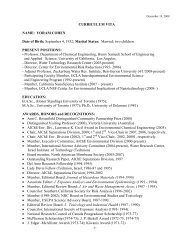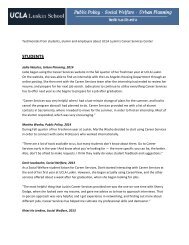Making a Market Executive Summary.pdf - UCLA Luskin School of ...
Making a Market Executive Summary.pdf - UCLA Luskin School of ...
Making a Market Executive Summary.pdf - UCLA Luskin School of ...
You also want an ePaper? Increase the reach of your titles
YUMPU automatically turns print PDFs into web optimized ePapers that Google loves.
We estimate that about 300 megawatts <strong>of</strong> multi-family capacity could be built if property<br />
owners were adequately incentivized with a payment equivalent to 24-26 cents per<br />
kilowatt-hour. This is based on paying owners a reasonable rate <strong>of</strong> return while at the<br />
same time ensuring that the cost <strong>of</strong> power is not prohibitively high. 300 MW would be<br />
a significant contribution to the city’s renewable energy portfolio, providing enough<br />
power to supply 30,000 homes <strong>of</strong> average size and need.<br />
Our analysis finds that 24 to 26 cents is sufficient to incentivize broad participation in<br />
the multi-family market, paying building owners a reasonable rate <strong>of</strong> return, while also<br />
enabling the other benefits <strong>of</strong> solar as outlined throughout this report. The price paid is<br />
based primarily on two factors: the cost <strong>of</strong> solar installation and the cost <strong>of</strong> obtaining<br />
financing. These may vary over time. At present, however, it is clear that a rate <strong>of</strong> 24 to<br />
26 cents per kilowatt-hour will generate sufficient participation and lead to the addition<br />
<strong>of</strong> 300 MW over the next five to 10 years.<br />
Further, a 300 MW program would produce over 4,500 direct and indirect job-years in<br />
local pr<strong>of</strong>essional services, construction, and ongoing system maintenance. Finally, it is<br />
worth noting that this payment can take either <strong>of</strong> two forms: a net-metering program,<br />
such as currently exists in the City <strong>of</strong> Los Angeles through the Solar Incentive Program,<br />
but with greater rates <strong>of</strong> return than are currently <strong>of</strong>fered; or a solar FiT, such as has<br />
been proposed and which policy-makers are currently considering.<br />
Who lives in multi-family housing?<br />
About 1.7 million people in Los Angeles<br />
live in multi-family housing – or, just<br />
under half <strong>of</strong> the city’s population.<br />
Of these, 94 percent are renters and<br />
6 percent are condo owners. While<br />
the households living in multi-family<br />
housing vary greatly, most are in middle<br />
and lower income brackets. The median<br />
household income in multi-family<br />
housing is about $36,000 per year,<br />
compared to a median household<br />
income <strong>of</strong> $71,800 for single<br />
family homes in the city.<br />
Among renters, the incomes<br />
are slightly lower. (See side chart.)<br />
Typically, as the number <strong>of</strong> units<br />
7


